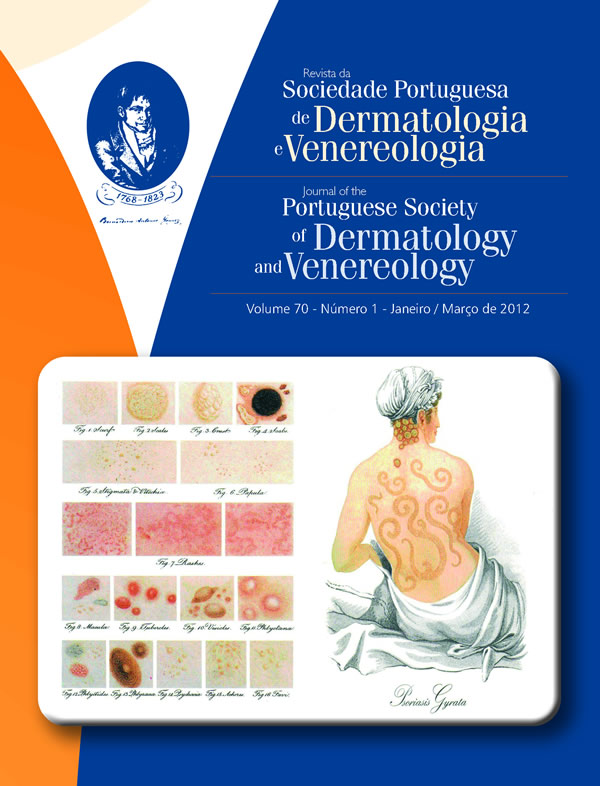VULVAR LICHEN SCLEROSUS – A REVIEW OF 208 CASES
Abstract
Introduction: Lichen sclerosus (LS) is a chronic idiopathic inflammatory disease that preferentially affects the anogenital region and postmenopausal Caucasian women.
Aims: Retrospective characterization of patients with vulvar LS diagnosed and treated at our Department (Vulvar Pathology Consultation), between 1986 and 2004.
Material and Methods: A total of 208 Caucasians women were included in the study. We consulted clinical charts and performed statistical analysis of the following variables: age, location, clinical signs and symptoms, association with other disea- ses, treatment modalities, follow-up and complications.
Results: The mean duration of LS was 6.3 years. The mean age at diagnosis was 59.6 years. The mean age at development of symptoms was 53 years. One hundred and eighty-two (87.5%) patients were in the postmenopausal period. Pruritus was the predominant symptom (90.9%). Only 39 (18.8%) patients did not developed vulvar atrophy. One hundred and forty-two (68.2%) had not narrowing of the vaginal in- troitus. Histological examination confirmed LS in 185 cases (93.9%) and it was compatible with LS in the remaining 12 (6.1%). Topical testosterone propionate (TP) was used in 88 (42.3%) cases, topical corticosteroids in 24 (11.5%) and both in 76 (36.6%). The mean follow-up was 9.5 years. Nine (4.3%) women developed vulvar SCC and the mean age at diagnosis was 68.2 years.
Conclusions: LS prevailed in post-menopausal women. Vulvar pruritus and atrophy were the main clinical findings. Most cases were confirmed by histology. Topical TP was the most commonly used therapy. Malignancy occurred in nine cases.
KEYWORDS – Vulvar Lichen Sclerosus; Testosterone Propionate; Glucocorticoids; Carcinoma, Squamous Cell.
Downloads
All articles in this journal are Open Access under the Creative Commons Attribution-NonCommercial 4.0 International License (CC BY-NC 4.0).








